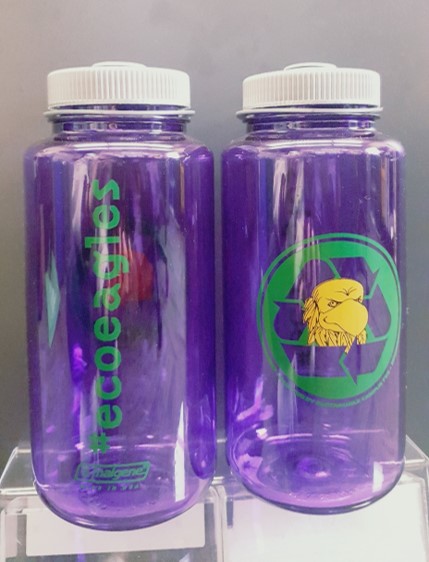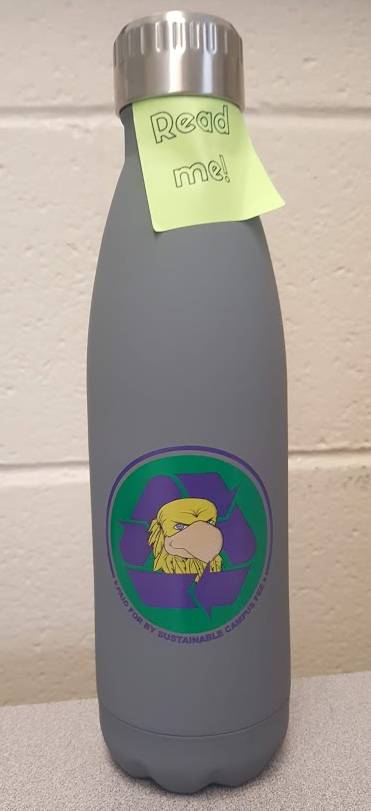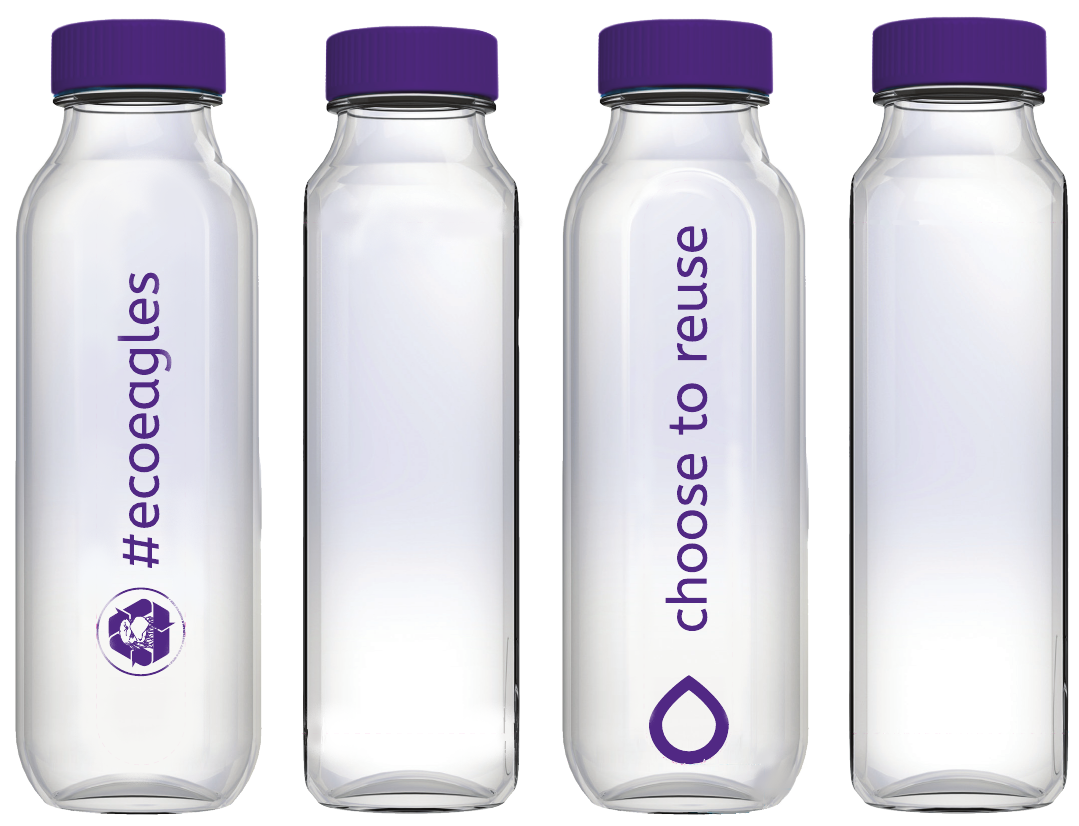Water Projects
Projects are selected and funds dispersed by the Sustainable Campus Committee, which is comprised of a mix of students, faculty and staff.
But the projects and ideas that we discuss come from you. Good ideas come from anywhere, and we want to hear yours.
You can:
- Submit your ideas through our Proposal Form
- Check out a complete list of other projects here
Campus Water Usage
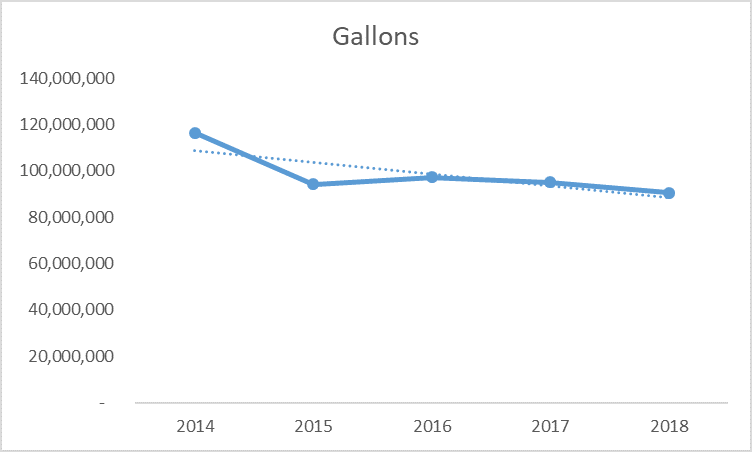 Campus water usage has trended downward over the past 5 years.
Campus water usage has trended downward over the past 5 years.
Hydration Stations
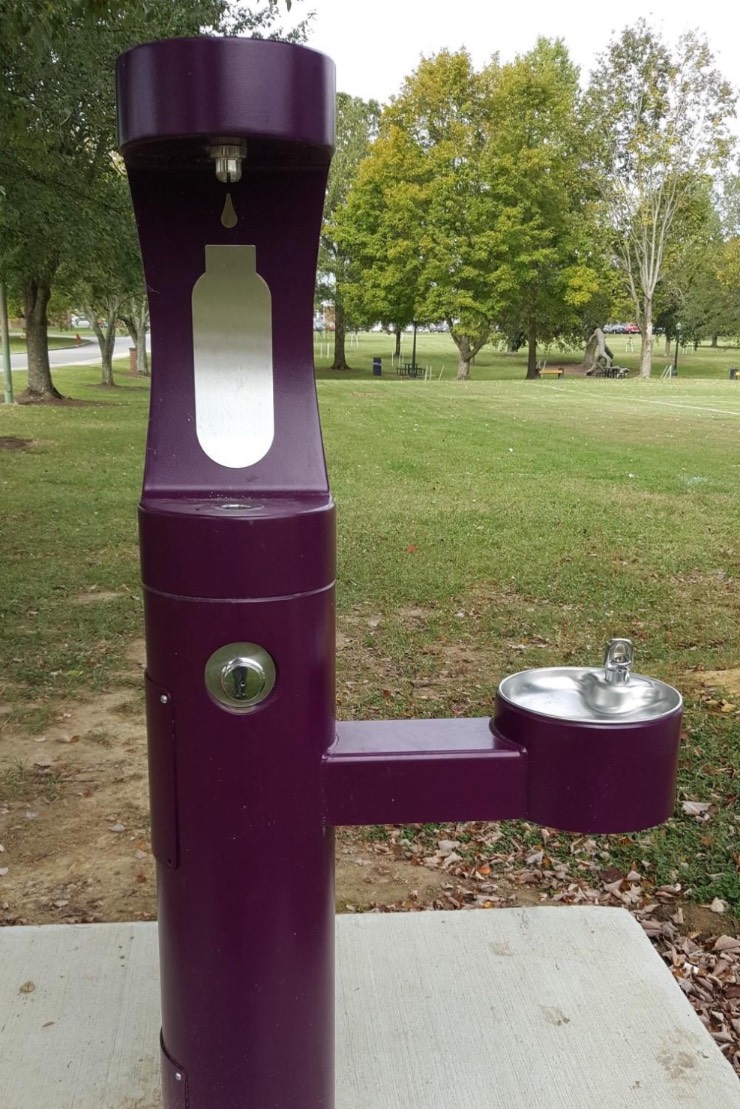
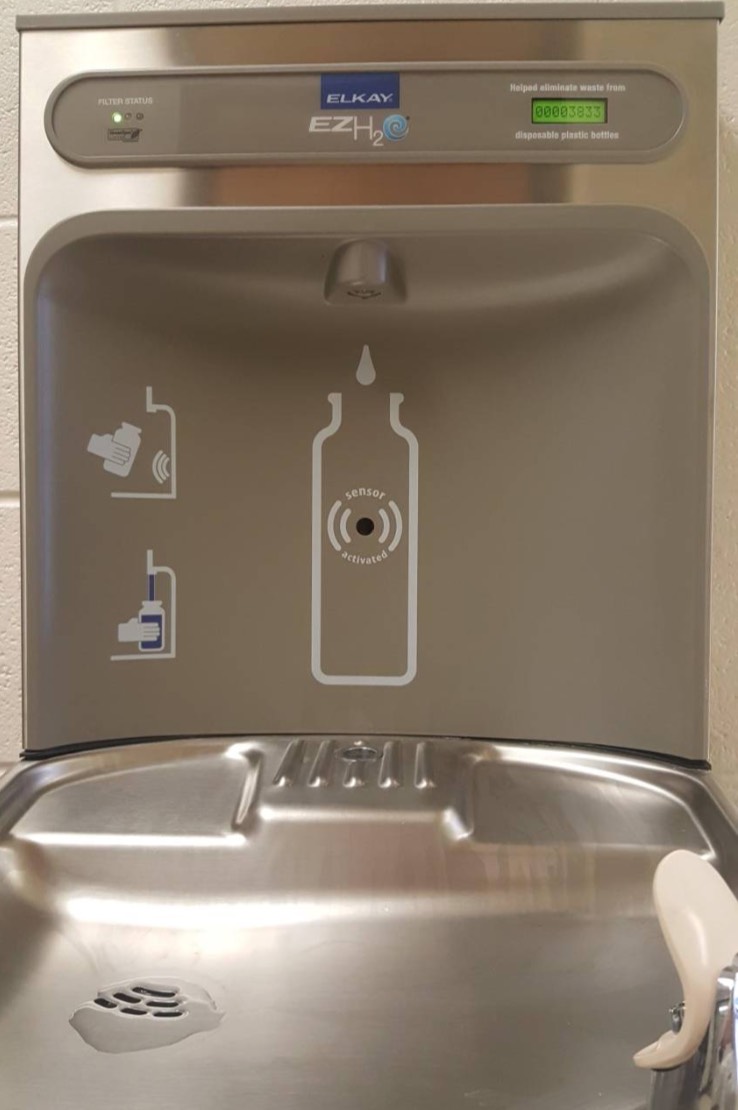
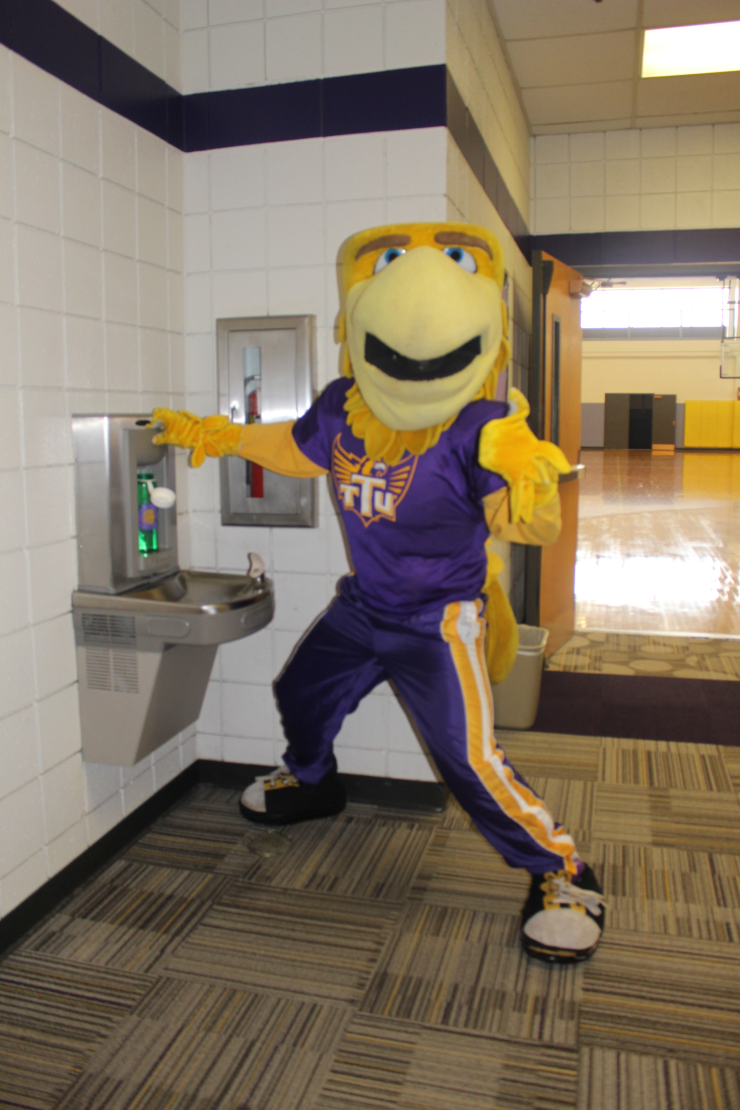
We have installed many hydration stations on campus in both indoor and outdoor areas. Many of our halls on campus have them installed so that students and faculty can fill up their reusable water bottles on the way to class. This helps reduce waste by encouraging (and making it more convenient for) everyone to carry a reusable water bottle to hydrate with instead of plastic disposable water bottles.
Reusable Bottles
The Office of Sustainability offers free water bottles to all new students each year. In March 2019, we celebrated World Water Day and gave away special bottles from the company Cupanion. Cupanion has a unique program to donate water every time you refill a bottle. You can learn more about them here!
Fact: Bottles used to package water take over 1,000 years to bio-degrade and if incinerated, they produce toxic fumes. It is estimated that over 80% of all single-use water bottles used in the U.S. simply become "litter."
Source: thewaterproject.org
Others
Intramural Pavilion
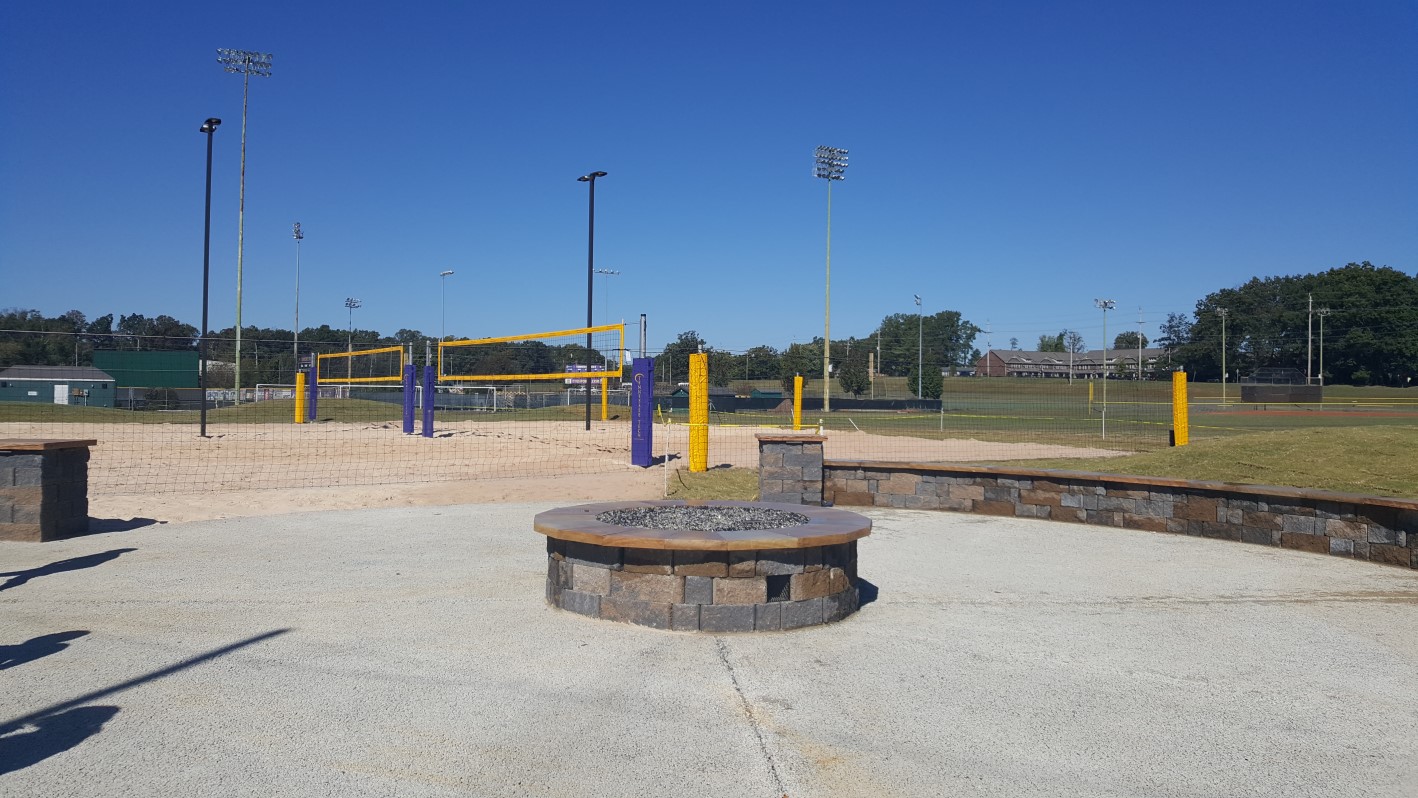
The primary sustainable feature in this project is the storm water management system. Pervious pavement allows rainwater to flow through it and deposit into a rain garden. This will protect water quality and decrease flooding by reducing the amount of storm water runoff. There is a drainage system under the sand volleyball court and the runoff from it flows into the berms and permeable pavement. Then it is captured in rain gardens and monitored by students through the monitoring station.
Low Flow Fixtures
These fixtures decrease the rate of water flow and subsequently the amount of water wasted per minute. They are installed in all buildings renovated in the last five years and will be in new buildings such as the LEED Certified STEM Center.
LEED Certified Lab Science Building
LEED (Leadership in Energy and Environmental Design) provides a framework to create healthy, highly efficient and cost-saving green buildings. The new Science, Technology, Engineering and Mathematics building has been approved as a green building by meeting the many requirements laid out by USGBC, among them is whole-building-level water metering to ensure control of water use and identification of new ways to save water. To learn more about the standards for LEED certification, check out the USGBC website.
Interested in your own water footprint? Check out this nifty calculator, and don't forget to follow us on social media to keep up with new initiatives and ways to get involved.


